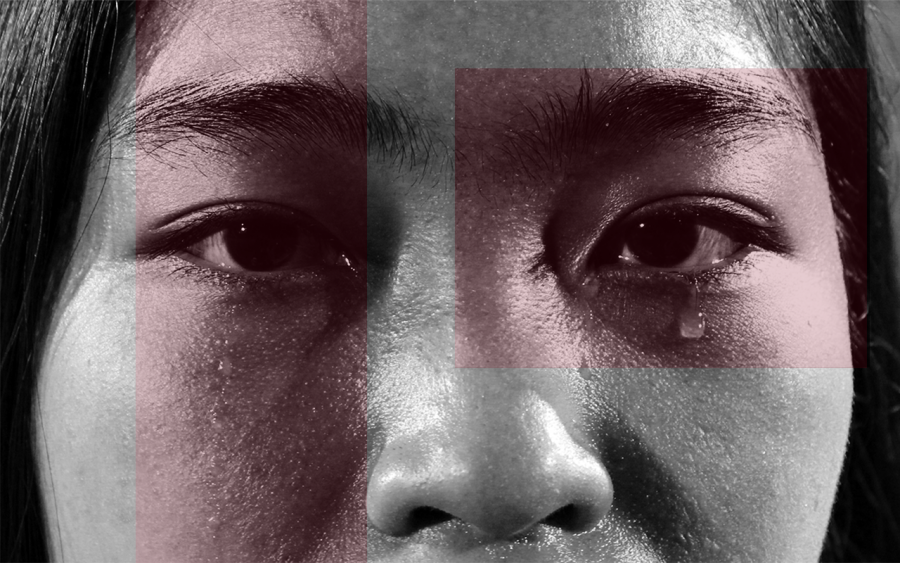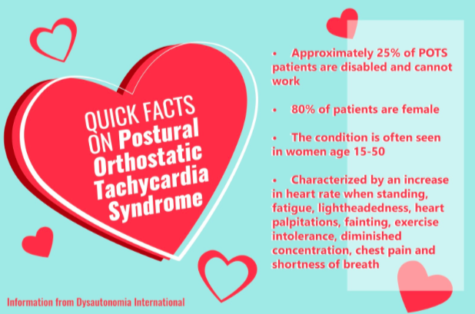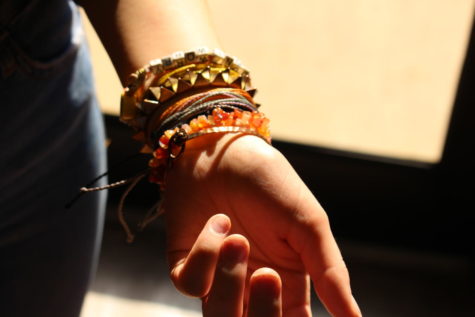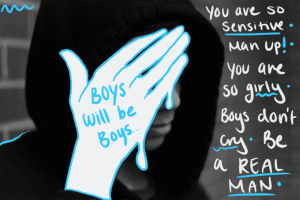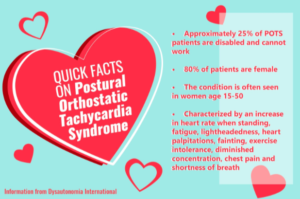Opinion: Don’t fear to tear
Crying is stigmatized in society and is often perceived as a sign of weakness. The Sidekick photo assignment editor Tracy Tran believes the stigma around crying in public should be removed. Photo illustration by Sally Parampottil
November 19, 2020
This story is written for my cat, Lily, who died in 2016. It became one of my unforgettable memories and I experience judgment from other people when I cry every year in remembrance of him.
As tears ran down my face, my emotions were displayed to everyone who walked past me in the hallway. My mask acted uselessly as the weak shield to hide emotions inside without letting other people know.
I should try my best to hold back tears and all of these weaknesses, I thought to myself.
But maybe not.
Maybe tears deserve to be appreciated, just like happiness, thankfulness and other emotions that we think of as positive.
“Our emotions are extremely complex, and most of the time whenever feelings become really strong, they become a little bit more in control of you than you are in control of them,” Coppell High School senior Natalie Adams said. “How many times have you been in class and thought something was really funny and try not to laugh but are unable to control it? In that same way, if you’re really, really sad, there’s a lot of [thoughts and emotions] going on and you need to cry.”
Crying is a symbol of trust. When people feel safe and know someone is trustworthy enough for you to show them your true feelings, you are willing to cry in front of them.
Many times, people cry because they seek comfort and want to release their emotions, not because they are weak and incapable of holding them back. People are brave when they don’t fear the judgment of others.
According to the Medical News Today, in the United States, females cry almost twice as many times per month than males.
“I wish that society had different perceptions of [crying in public] and that we could erase any stigma around crying,” CHS head counselor Ann Cinelli said. “When I was in graduate school to be a counselor, one of my professors told me to never give somebody tissues when they’re crying [but instead], make tissue available. If you give somebody tissues when they’re crying, it tells them to stop crying. You want them to control their emotions.”
In Coppell, the diversity of our culture directly affects how we have created social norms.
“The root of the idea of normalizing crying is based on cultural norms,” CHS psychology teacher Eric Walker said. “What we’re dealing with here in Coppell [are] the cultural norms that are [a part of] American culture and society. You even have subcultures in Texas and the Dallas-Fort Worth area within. These subcultures and areas define some of what is acceptable in terms of expressing emotions.”
Coppell ISD provides counseling services by letting students schedule meetings with their counselors. Yet, there are no official lessons being applied specifically for normalizing crying other than the concept of emotions in psychology, which is an optional course.
By introducing new lessons about the norms of expressing emotions and promoting the benefits of doing so to relieve stress, CHS students can take a step in the right direction to develop their empathy and defy the norm against crying.
I wish that society had different perceptions of [crying in public] and that we could erase any stigma around crying — CHS head counselor Ann Cinelli
This stigma is even more prevalent for males. One of the misconceptions of toxic masculinity is that boys should not show their emotions by crying because it is considered overly vulnerable.
“It doesn’t make sense to me why boys aren’t allowed to cry in front of people,” CHS sophomore Jeevana Ramakrishna said. “Every gender has to take part in natural emotions. It doesn’t make sense why men cannot cry or relieve stress. A lot of times, it helps cool you down and [gives you] a rush of adrenaline.”
I learned that crying makes me feel stronger. When I first moved to Coppell during my freshman year, everything was new to me. With the limited ability to speak English, I could barely communicate with anyone, only raising my hand to answer the questions in my dreams. At that time, my worst enemy was presenting, which we did often in my business class.
My first presentation was on markets and exchanges. While my classmates were all ready with their slides after a short amount of time, I nervously presented my slides with a bunch of texts and graphics. After crying several times in front of my teacher, CHS9 business teacher Marieke Mastebroek, who used to have the same difficulties as me when it came to a new language, I set a goal to keep working hard and follow Mastebroek’s advice to “enjoy what you do, do your best, and, most of all, believe in yourself.”
Thinking back about that moment, I’m glad that my tears were there and they helped me build my confidence.
Follow Tracy (@AnhImtracy) and @CHSCampusNews on Twitter.



